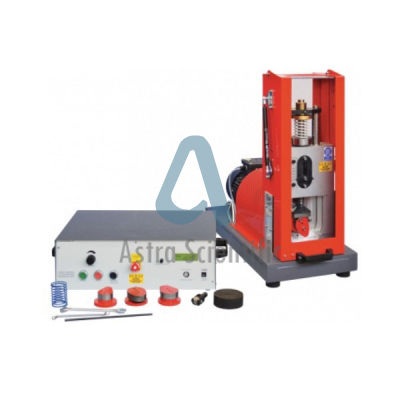Description and Specification for Lab Tenders
Astra Scientific Cam Analysis Apparatus.
The experimental unit clearly demonstrates the fundamentals needed to
deal with free and forced vibrations. The differences between the two
main types of excitation for forced vibrations can be shown on a simple
vibration model.
The central element of the experimental unit is a sturdy aluminum
profile frame to which the different experimental setups are attached. A
bar-type oscillator is used as the vibration system.
This offers easy and flexible configuration. The spring, damper and
vibration exciter can be mounted in any position. An imbalance exciter
and a displacement exciter are available for spring base-point
excitation.
The excitation frequency is set and displayed on a control unit. An oil
hydraulic damper allows damped vibrations with adjustable damping level.
A mechanical drum recorder offers the option of recording the
vibrations. The measured values can be displayed and analyzed on a PC
using the optional unit for data acquisition.
FEATURES:
• Demonstration of basic fundamentals of mechanical vibration theory
• Free vibrations
• Damped vibrations
• Inertia force and displacement excitation
• Forced vibrations
• Resonance
• Amplitude response and phase response
SPECIFICATION:
• Fundamentals of mechanical vibration theory; free, damped and forced
• Bar-type oscillator: LxWxH: 700x25x12mm, 1,6kg
• Coil springs
0,75N/mm
1,5N/mm
3,0N/mm
• Exciter
Frequency: 0…50Hz, electronically controlled
Imbalance of the imbalance exciter: 0…1000mmg
Stroke of the displacement exciter: 20mm
• Damper constant: 5…15Ns/m, oil-filled
• Mechanical drum recorder
Feed: 20mm/s
Paper width: 100mm
• Required for operation
230V, 50Hz, 1 phase
230V, 60Hz, 1 phase; 120V, 60Hz, 1 phase

